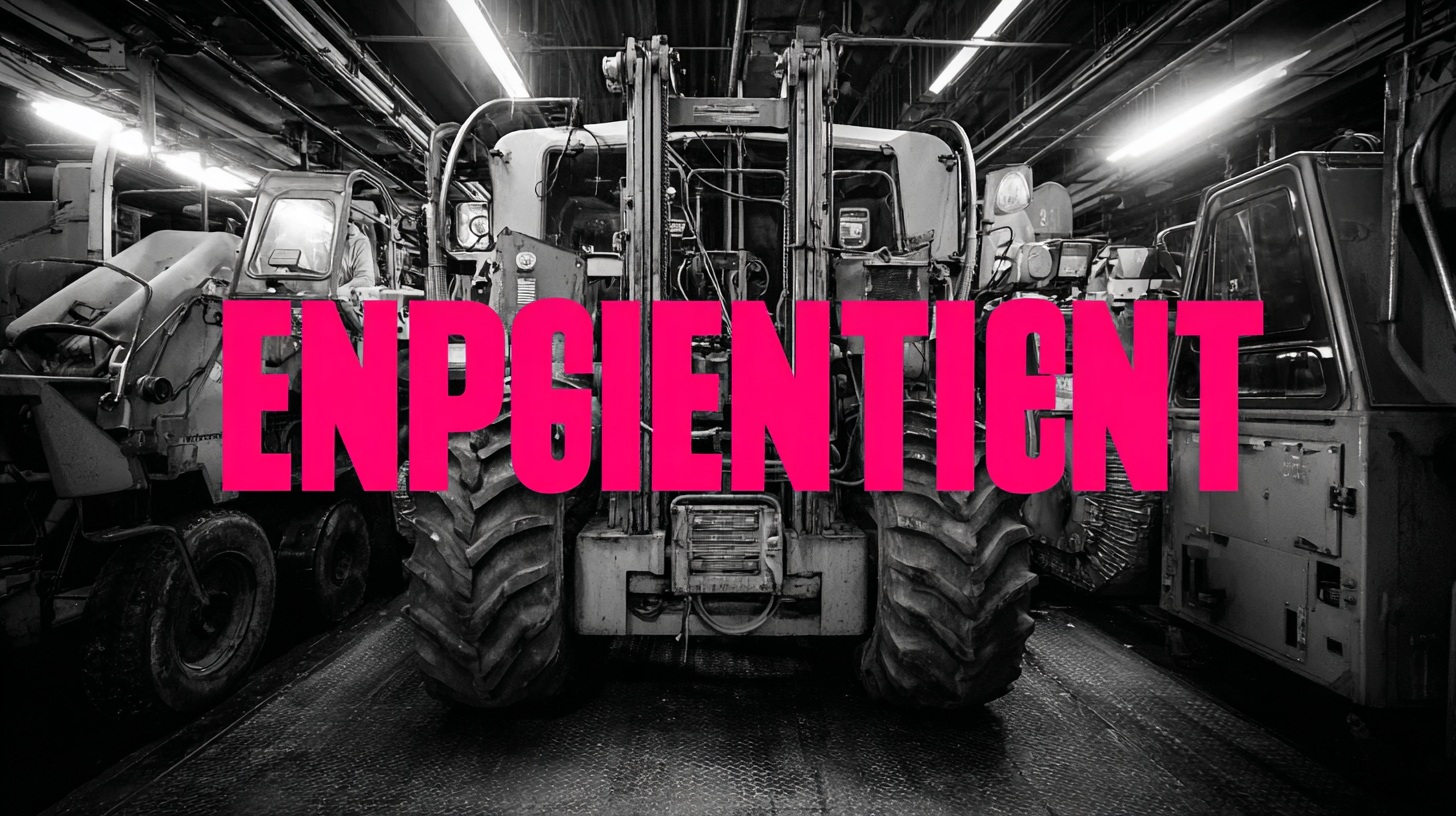Transforming Industries: Real-World Success Stories of Best Equipment Inspection Applications
In today's fast-paced industrial landscape, the significance of Equipment Inspection cannot be overstated, as businesses seek to enhance safety, efficiency, and compliance. According to a report by MarketsandMarkets, the global equipment inspection market is projected to grow from USD 8.7 billion in 2020 to USD 12.1 billion by 2025, illustrating a compound annual growth rate (CAGR) of 7.0%. This growth is fueled by stringent regulatory frameworks and the increasing importance of asset management across industries such as manufacturing, oil and gas, and transportation.

Real-world success stories highlight how innovative equipment inspection applications have transformed operations, reduced downtime, and ensured optimal performance. By understanding the unique characteristics and applicability of different types of inspection technologies, businesses can capitalize on their benefits, ultimately leading to sustainable operational excellence. This blog will delve into these transformative applications and the measurable advantages they bring to various sectors.
Real-World Applications of Equipment Inspection: A Look at Key Industries
In today's rapidly evolving technological landscape, equipment inspection applications are playing a pivotal role across various industries. One prominent sector is semiconductors, where the demand for high-precision inspection tools has surged. With advancements in domestic equipment manufacturing, companies are successfully developing sophisticated inspection systems tailored for specific applications, such as Mini/Micro LED displays and semiconductor packaging substrates. These innovations ensure higher accuracy and reliability in quality control, addressing the industry's requirement for robust verification processes amidst strict customer validation barriers.
Additionally, the integration of artificial intelligence in equipment inspection is transforming traditional methods. For instance, significant discussions have emerged regarding the use of AI in the inspection and monitoring of specialized equipment. This shift towards intelligent inspection not only enhances operational efficiency but also supports the broader goals of digital and smart transitions within industries like energy and healthcare. As the need for stringent testing grows, particularly in sectors with complex production processes, the focus on effective equipment inspection applications is set to redefine industry standards and drive future advancements.
Digital Innovations Driving Effective Equipment Inspection Solutions
In today's rapidly evolving industrial landscape, digital innovations are reshaping the way equipment inspections are conducted. Advanced technologies such as IoT (Internet of Things), AI (Artificial Intelligence), and machine learning are at the forefront, enabling real-time monitoring and analysis of equipment conditions. By integrating these technologies into inspection protocols, industries are not only enhancing the accuracy of their assessments but also significantly reducing downtime. For instance, predictive maintenance powered by AI algorithms allows companies to anticipate potential failures before they occur, ensuring uninterrupted operations and maximizing productivity.
Moreover, mobile applications are transforming the inspection process into an agile and efficient practice. Equipped with features like augmented reality, inspectors can visualize data overlays on machinery, simplifying complex evaluations. These applications not only streamline the workflow but also facilitate better communication among team members, allowing for faster decision-making. The result is a more proactive approach to equipment management, where issues are addressed swiftly, and safety standards are upheld effectively. As industries continue to embrace these digital solutions, the future of equipment inspection looks promising, paving the way for enhanced operational efficiencies.
Case Studies: How Effective Inspections Boost Operational Efficiency
In today's fast-paced industrial landscape, the significance of rigorous equipment inspections cannot be overstated. Effective inspections lead to substantial boosts in operational efficiency, mitigating risks and ensuring safety. For instance, companies like GE Aviation have implemented advanced inspection technologies that not only streamline processes but also enhance equipment reliability. By adopting real-time monitoring and predictive maintenance, they have experienced a marked reduction in downtime, showcasing how critical inspections can transform operations.

Another exemplary case is in the oil and gas sector, where organizations utilize drone technology for pipeline inspections. This innovative approach not only increases safety by minimizing the need for personnel to enter hazardous areas but also improves inspection speed and accuracy. As a result, companies can swiftly identify potential issues, ensuring quick resolutions and maintaining productivity levels.
Tip: Train your staff on the latest inspection technologies to stay ahead of industry trends. Regular upskilling can empower your team to leverage the most efficient tools available, enhancing overall productivity.
Top Reasons to Invest in Advanced Equipment Inspection Technology
In today's rapidly evolving industrial landscape, investing in advanced equipment inspection technology is crucial for ensuring operational efficiency and meeting the demands of the smart factory era. According to a 2023 survey, manufacturers are increasingly leveraging interconnected networks of machines and advanced technologies to automate processes and enhance decision-making. This transformation not only optimizes production but also significantly reduces downtime through proactive equipment inspection measures, which, as shown in industry reports, can decrease maintenance costs by up to 30%.
Furthermore, the integration of advanced inspection technologies is aligned with current trends in cybersecurity enhancements for manufacturing environments. With the emergence of Extended Detection and Response (XDR), companies can unify their security operations, enabling faster detection and response times. This is vital as equipment inspection applications become more sophisticated, utilizing real-time data analytics to identify potential issues before they escalate. Investing in these technologies is not just a matter of compliance but a strategic move that can lead to substantial increases in productivity and sustainability within the industry.
Transforming Industries: Equipment Inspection Technology Adoption Rates
This chart illustrates the adoption rates of advanced equipment inspection technologies across various industries, demonstrating the growing importance and effectiveness of these solutions.
The Future of Equipment Inspection: Trends and Predictions in Industry Applications
The landscape of equipment inspection is rapidly evolving, driven by advancements in technology and changing industry demands. According to a recent report by Market Research Future, the global equipment inspection market is expected to reach $10 billion by 2025, growing at a CAGR of 7.5%. This growth is largely attributed to the increasing adoption of automation and AI-driven inspection solutions, which enhance accuracy and efficiency. Industries are recognizing that proactive inspection not only minimizes operational risks but also prolongs the lifespan of equipment, leading to significant cost savings.
Incorporating trends like predictive maintenance and IoT connectivity into equipment inspection can further optimize operational performance. A study by McKinsey highlighted that predictive maintenance could reduce equipment downtime by 30-50%, showcasing the immense potential of integrating advanced analytics into inspection practices. As industries pivot towards smarter operations, harnessing these technologies will be crucial.
Tips: For businesses looking to enhance their inspection processes, consider investing in mobile applications that enable on-site data collection. Additionally, training personnel in the use of these digital tools can lead to a more streamlined inspection workflow. Moreover, exploring partnerships with technology providers can unlock access to state-of-the-art solutions tailored to specific industry needs. Embracing these trends now will position companies for success in the increasingly competitive landscape.

